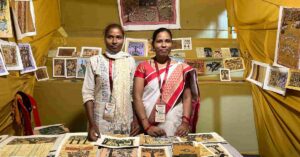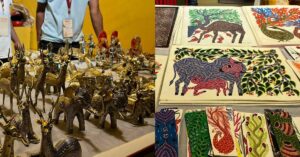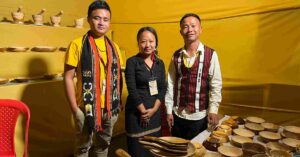Historian Who Got Kolkata’s Durga Puja Its UNESCO ‘Intangible Cultural Heritage’ Tag
In December 2021, UNESCO included Kolkata’s Durga Puja in its Lists of Intangible Cultural Heritage. The historian behind the feat, Tapati Guha-Thakurta, explains how this took shape.
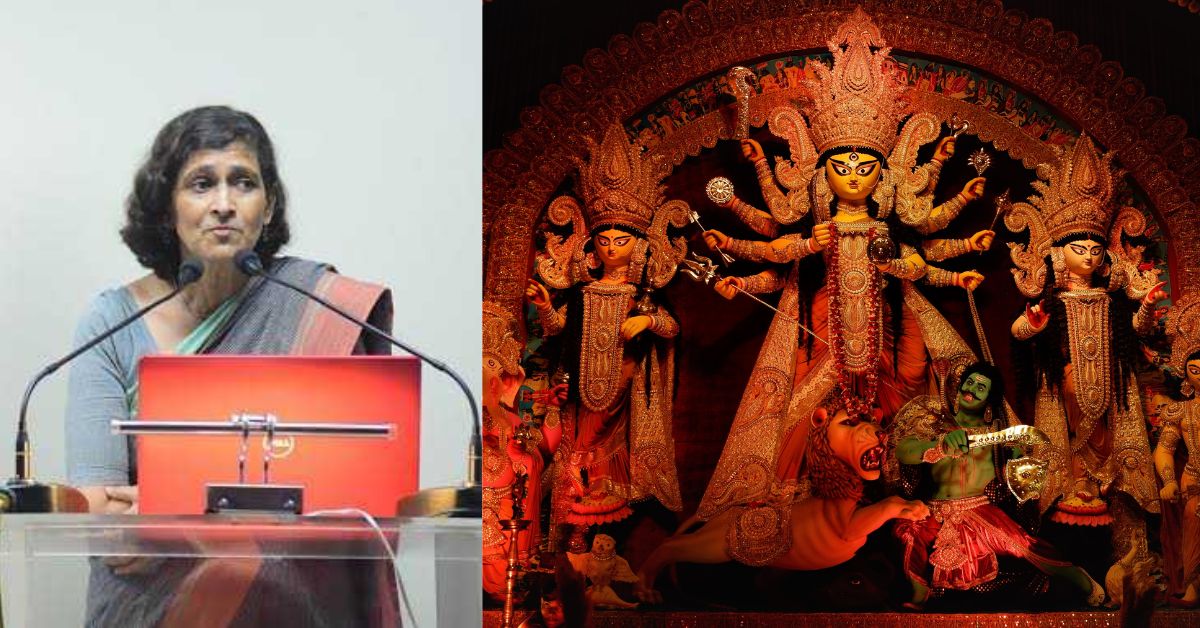
(Feature image: Facebook)
The belief that Durga symbolises feminine strength and destruction of the unjust originates from the legend of how she defeated Mahishasura, a demon that was blessed with unbeatable power by the Gods themselves.
She is not a figure that kills and destroys for hatred, but instead to restore peace, to deliver justice to and liberate those who need her in their direst times. She is terrifying but benevolent, destructive but peaceful — a fortress, as her name suggests, against all that is evil in the world.
Durga Puja, or pujo, is an annual celebration to commemorate her victory and to worship this epitome of divine and feminine strength. At its core, the centuries-old festival remains a religious celebration of good over evil, but modern-day pujo has evolved into a symbol of many other things — community, creativity, a transforming public space, and culture evolving with time.
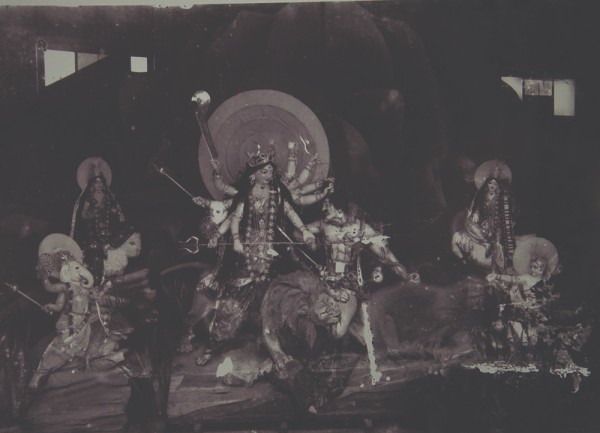
This is the basis on which historian Tapati Guha-Thakurta, in her book In the Name of the Goddess: The Durga Pujas of Contemporary Kolkata (2015), traced the evolution of traditional pujo to its modern-day forms. Beyond religious aspects, she aimed to highlight the creative, cultural, and social economy that the grand festival generates.
It was with this acknowledgement that UNESCO, in December 2021, included the Durga Puja in its Lists of Intangible Cultural Heritage. Guha-Thakurta was the historian behind this coveted tag, chosen by the Ministry of Culture to bring to light that the 10-day festival is a multi-layered, dynamic, and an integral aspect of Kolkata’s socio-cultural and political landscape.
Pujo — a cultural phenomenon
For Guha-Thakurta, whose research began as early as 2002-03, the question to be answered was ‘How does pujo redefine our understanding of who an artist is, and what constitutes art?’
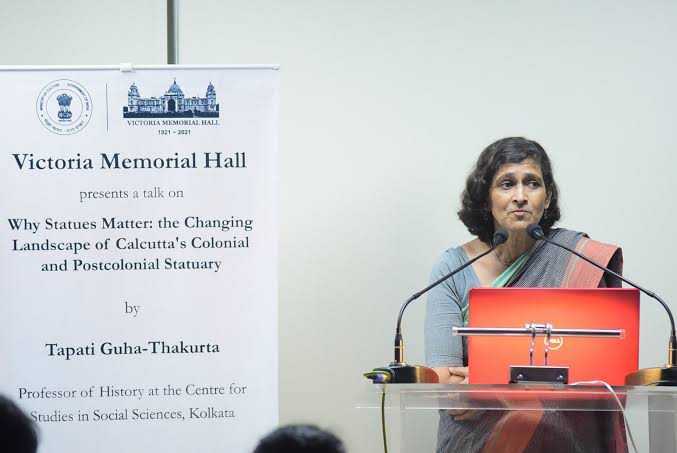
“For the last two decades, I have become a researcher of Kolkata’s Durga Puja. I have always been a participant and spectator, but my new vocation as a researcher began around 2002,” she recalls.
With fellow researcher Anjun Ghosh and a team from the Centre for Studies and Social Sciences, Kolkata, where she has worked as a professor and director of history, Guha-Thakurta began researching the nature of the contemporary festival.
She says, “Our focus was very much on the present, the modern history of this mega-urban festival, and we wanted to look at several issues. My main goal was to look at the transforming visual culture of the festival, the new aesthetics, the designs of the pandals…My colleague Anjun was looking into neighbourhoods and communities, and how the puja occupies and transforms public spaces.”
The duo had a dedicated team of researchers and their work was seasonal, she says, typically beginning a month or two before each year’s festivities. Unfortunately in 2015, Anjun died suddenly due to cancer. “I was left bereft but was determined to finish the work we had both begun. It would perhaps not be the book we would have written together, but it would certainly reflect our joint research.”
The history of the present
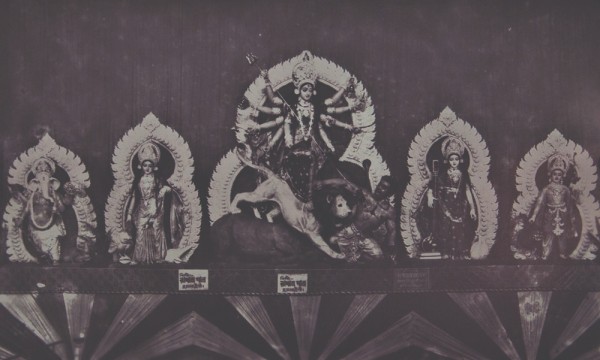
Guha-Thakurta says, “In 2014 when the West Bengal government took over the festival as a prime platform for their politics and governance, it offered me a convenient closing point to my research. Durga Puja also allowed me to think about the consumption and spectatorship of art, which is just as important as the aspects of worship and cultural celebration.”
She adds that an integral part of pujo is also walking and touring the city, and how the artistic productions and pandals transport you not only from one geographical location to another, but also through different periods in time.
“You could be walking from a replica of a Bhubaneswar temple to a remake of, say, a ‘Calcutta High Court’. Or you could be transported in time to, say, the Indus Valley Civilisation from modern-day celebrations. Folk villages from Africa and remote India alike are put on display. I spoke to artists, sponsors, advertisers, organisers, and all stakeholders to understand the makings of this grand festival,” she explains. “I studied how age-old traditions of image and pandal-making factor in and have been modified in the newer themes of celebration, how pujo champions cultural tradition and nostalgia alike.”
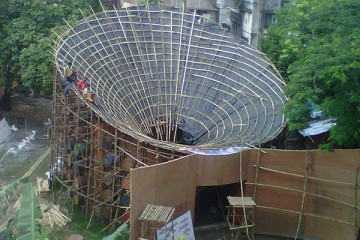
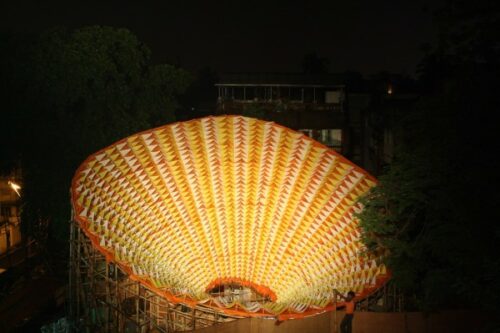
She also brought in the Bonedi Barir Pujo (the most traditional celebration of the festival which mainly takes place within households) and how it amalgamates with street-level productions. “It gives you an understanding of how old families and households integrate new ways of celebration.”
Guha-Thakurta emphasises that her book was not a history of Durga Puja, but rather a study of its newness — the sponsorship, awarding, publicity and commercialisation that have become an inalienable part of the phenomenon. She calls it a history of the present.
“A common concern these days is how the Durga Puja has lost its link with worship altogether. But I would go against this formulation. The festival has always been only partly concerned with the arrival of the Goddess every autumn. Right from the late 18th and 19th centuries when it was held in aristocratic households, pujo has always been about mega extravaganza, entertainment, and social gatherings. This is part of the history of the urban phenomenon. What is new is the scale of art production.”
Even as households warmly welcome Durga every year, she adds, her presence in the celebration is not limited to just worship. She also forms a part of the commercialisation — through ads and imagery.
Kolkata’s Durga Puja
Guha-Thakurta was invited by the Ministry of Culture to put together an extensive dossier to submit to UNESCO, based on her decades-long research. The government’s previous attempts to bring this recognition had not taken the required shape.
“We began in September 2018 and were given four to five months to put the dossier together. It had very specific questions which were given to us as a form. The interest was in the community — its inclusivity, diversity, how it has kept up with changing times while retaining the core of the traditional elements of worship, how many people are involved, who the stakeholders are, its commercial and creative economy, the livelihoods, environmental impact, restrictions, governance…”
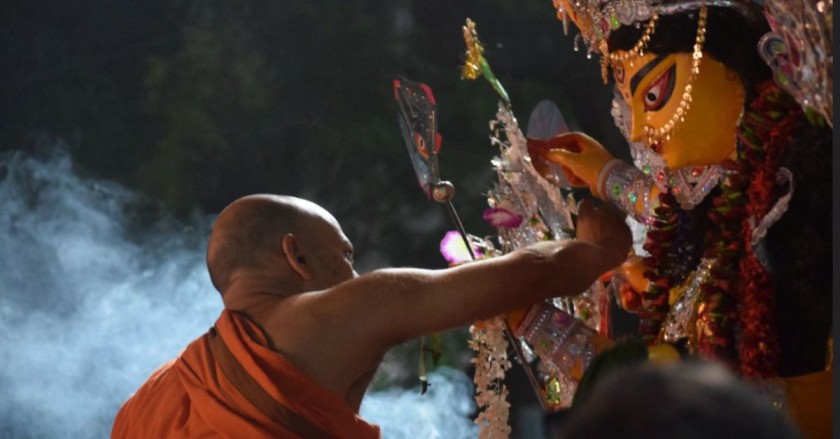
Explaining the length and breadth of the significance of Durga Puja was a challenge, she says. Each question was concise and allowed only 150-300 words as answers.
She laughs, “My book was like a long essay, like those we used to write in exams. The dossier, on the other hand, was a bit like those MCQ tests students today have to undergo. As a historian, I digress and analyse, but my team helped me streamline the process.”
She also notes that the Government of India was keen on the inclusion of Durga Puja as a nationwide phenomenon rather than its significance in the city of Kolkata. “But that is too huge,” she opines. “Yes, the festival happens practically everywhere, but it is in Kolkata that it has taken a certain form…a kind of splendour…which is unique. UNESCO’s list emphasises a lot on community and location. We argued that pujo took on this form, a character in Kolkata, where it has its long history.”
UNESCO was also interested in the gendered dimension of the festival, she notes.
“How far are women being included in the celebrations? We looked at women idol makers, a relatively new phenomenon. We looked at their community participation as the face of publicity and organisation, as dancers and performers of dhunuchi — where women have only recently begun to foray. We included the new range of artists and designers involved. Our signatures came from artists, organisers, traditional banedi barir organisers, bloc organisers, Kumurtuli idol-makers…we could not reach the priests, but looked at households as individual upholders of the traditional worship. Then of course was the biggest stakeholder of pujo — the West Bengal government.”
The final dossier was submitted in March 2019 and after a few queries, the nomination was made last year for UNESCO’s Lists of Intangible Cultural Heritage.
After the tag: What’s next?
The final question that Guha-Thakurta looks to answer is, what does this tag signify? What will be its effects?
“For a cultural phenomenon like Durga Puja, we do not know yet what the benefits of this international branding will be,” she notes. “It is now up to stakeholders, regulators, and governance bodies to bring in international attention. The question of the creative and cultural economy existed long before the tag. In fact, surveys beforehand analysed these economies well to show the huge turnover generated by Durga Puja. So there is no denying that a large commercial economy of the state rests on this one festival.”
She also asks, “How far can you regulate pujo? Every pujo is run by a neighbourhood or club, so how do we look at this mega-controlled phenomenon as a single unit?”
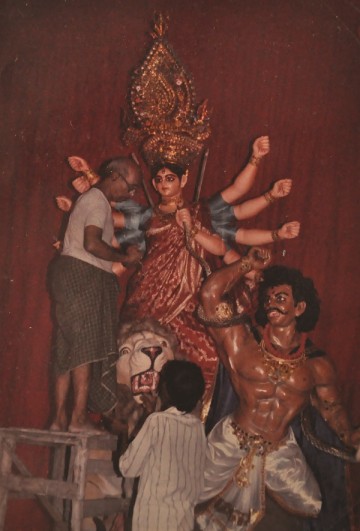
She says this can be done, to an extent, by looking at existing regulations around Durga Puja relating to tree damage, sound and river pollution, road safety, pilfering of electricity, and more.
For this, she opines, the police and local governing bodies have been working in tandem for many years to slightly discipline the celebrations. The government, she says, has also tried to regulate immersion so that the Hooghly River does not bear the brunt of it all, by creating immersion waterbodies or devi ghats, especially for this.
Guha-Thakurta also reminds us that the UNESCO tag is subject to a five-year review.
“If the festival is no longer kept up to the standards awarded, the tag can be taken away.” She addresses stakeholders stating that the tag is for us to make maximum use of to benefit the festival and the economies generated as a whole.
Edited by Yoshita Rao
This story made me
- 97
- 121
- 89
- 167
Tell Us More
We bring stories straight from the heart of India, to inspire millions and create a wave of impact. Our positive movement is growing bigger everyday, and we would love for you to join it.
Please contribute whatever you can, every little penny helps our team in bringing you more stories that support dreams and spread hope.






